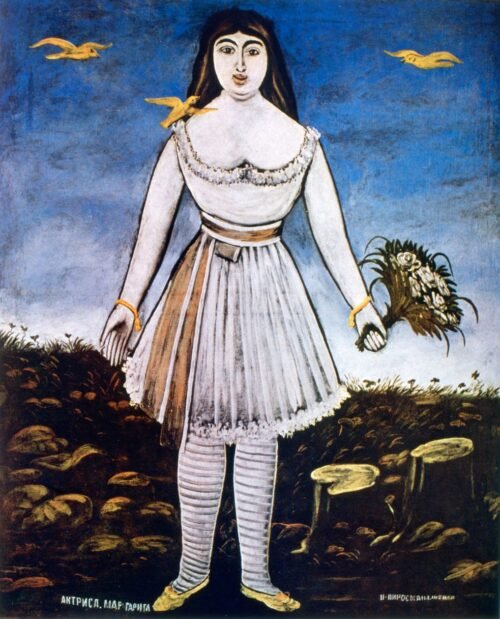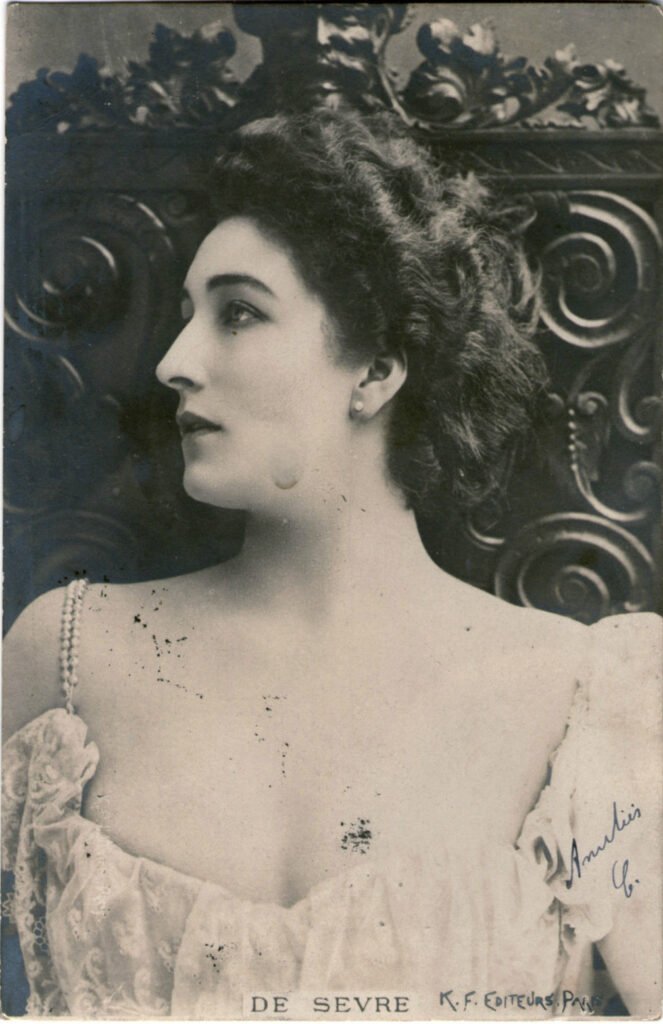
The name Niko Pirosmani evokes a deep sense of poignancy and admiration. A renowned Georgian primitivist painter, Pirosmani’s life from 1862 to 1918 was marked by poverty and an unrequited love that transcended time. His life’s work, often exchanged for mere sustenance, only gained recognition and admiration posthumously. Yet, one story, captured in legend and song, paints a vivid picture of his undying affection for a French actress which resonates around the globe
In March 1909, the mesmerizing French singer and dancer, Margarita de Sevres, performed in Tiflis (now Tbilisi), capturing the heart of Pirosmani. Legend has it that numerous suitors vied for her heart, yet she remained an elusive muse. Her belief was steadfast—an artist belonged to the nation, not to an individual. Pirosmani’s fervent love saw him sell his modest dukan, purchase nearly every flower in the city, including the mythic “million red roses,” and present them before her hotel.

The street outside Margarita’s window transformed into a vibrant sea of color, and amidst this floral bounty, a man from Mirzaani, known as Nikala to the townsfolk, stood. Known as a painter, his astounding romantic display was his declaration of eternal love—a love seemingly destined for heartbreak. Despite his passionate overtures, Margarita shifted her interest to wealthier admirers, leaving Niko with a farewell note as she departed for Paris.
Their parting marked the end of Pirosmani’s bright hope and left behind the enduring masterpiece “Actress Margarita.” His acute pain and subsequent poverty took a toll, casting the lonely painter into the shadows of society’s disdain. In a rare moment of candor, Pirosmani confided in artist Lado Gudiashvili in 1915: “My life is a crucifixion. I suffer terribly from the arbitrariness of all shopkeepers, kintos, and other rogues… Let others laugh at my works, but I continue on my path.”
Disease and destitution took Pirosmani’s life in a basement in 1918, without a grave to mark his resting place. His legacy, however, as the symbolic resurgence of hope, gained the world’s embrace over time.
Decades later, in March 1969, an exhibition at the Paris Decorative Museum drew an elderly visitor with a trembling smile, Margarita de Sevres herself, marveling at the portrait “Actress Margarita.” Her visit, a full circle of a lifetime, rekindled the eternal legacy of Niko Pirosmani’s undying love for her.

Thus, though Niko Pirosmani never saw a worldly acknowledgment in his lifetime, history immortalizes him as an artistic genius. His works now grace the walls of prestigious museums, fulfilling the destiny of a legacy built not just on brushstrokes, but on the undying power of love.


